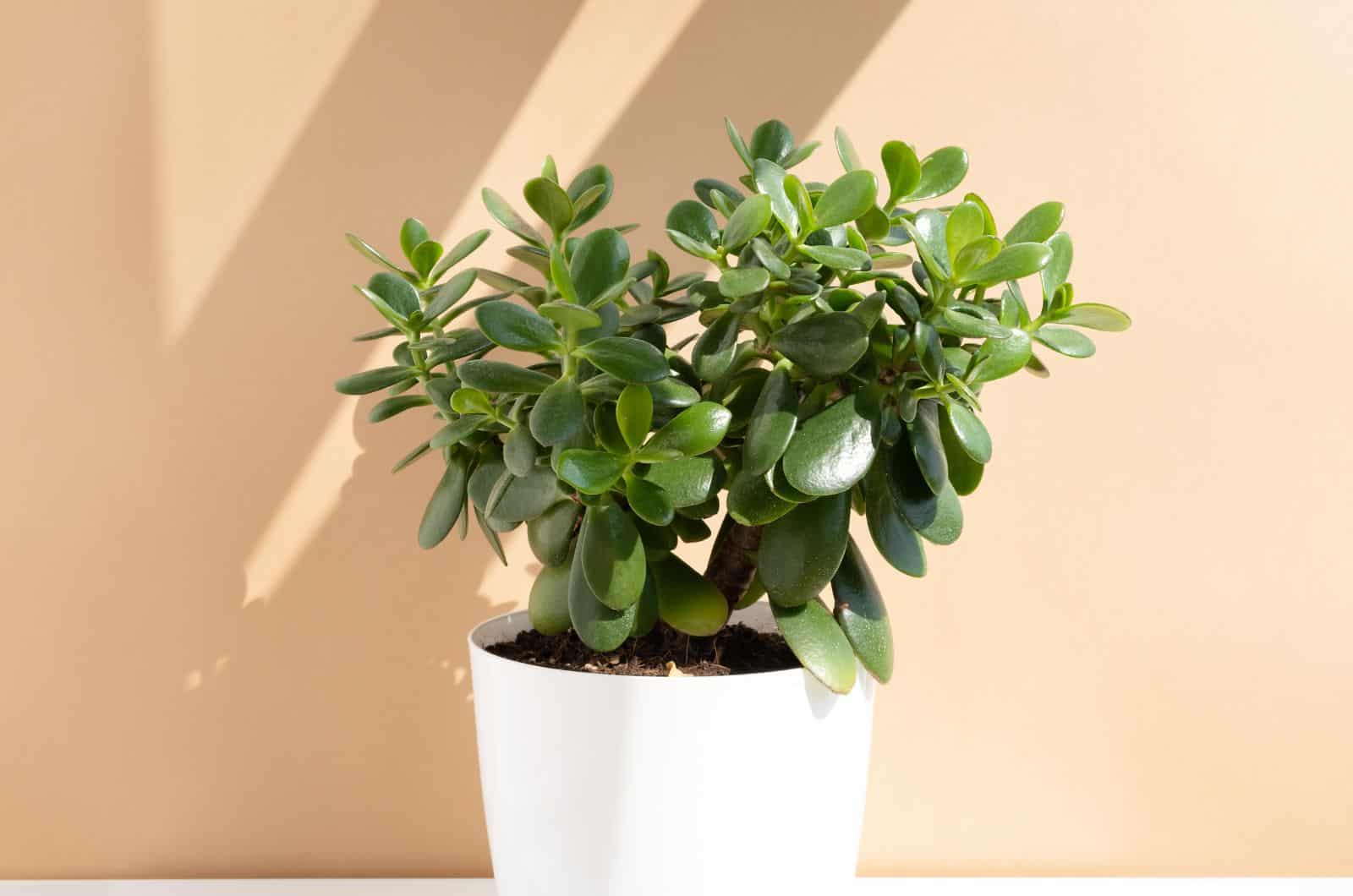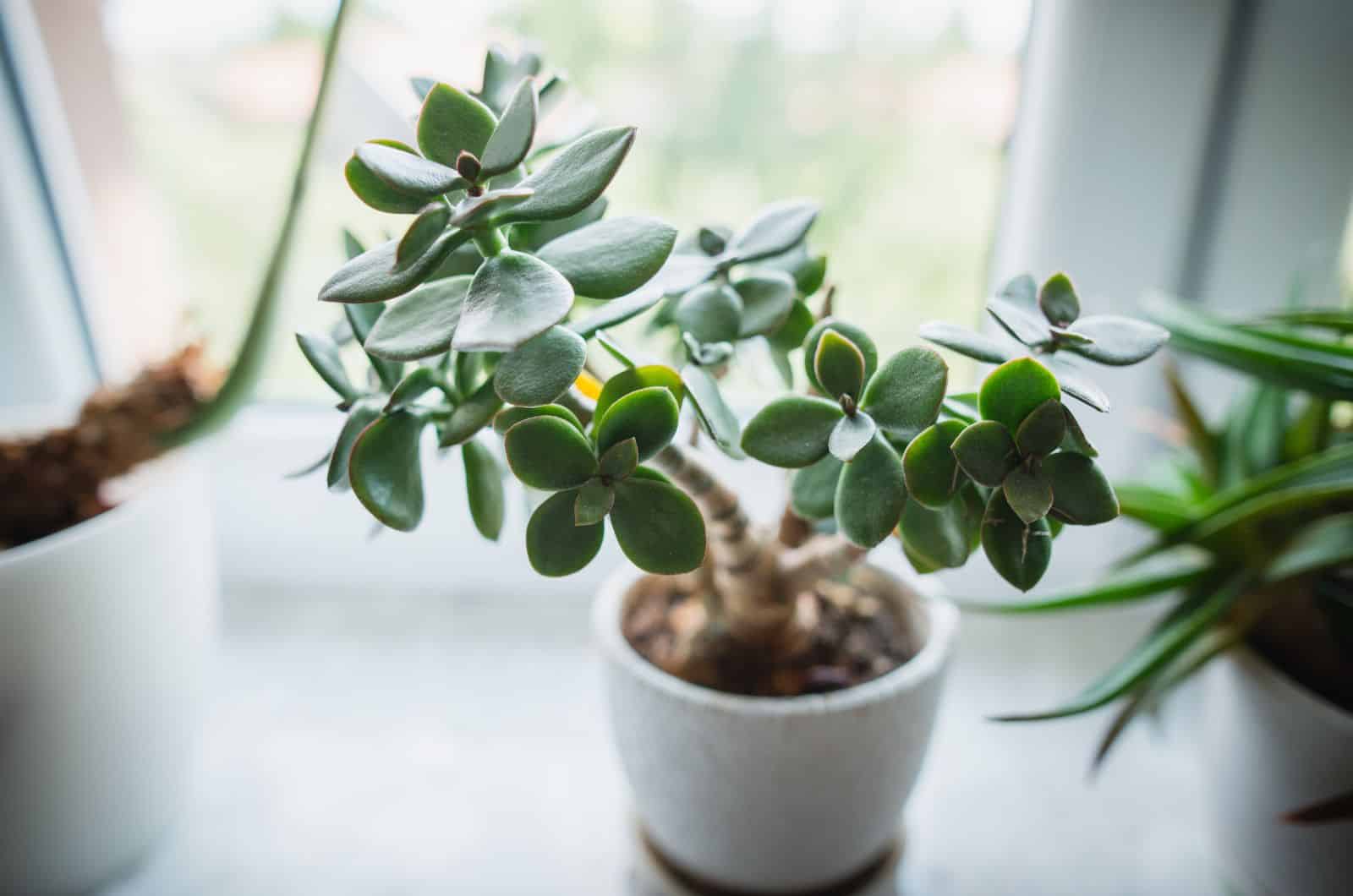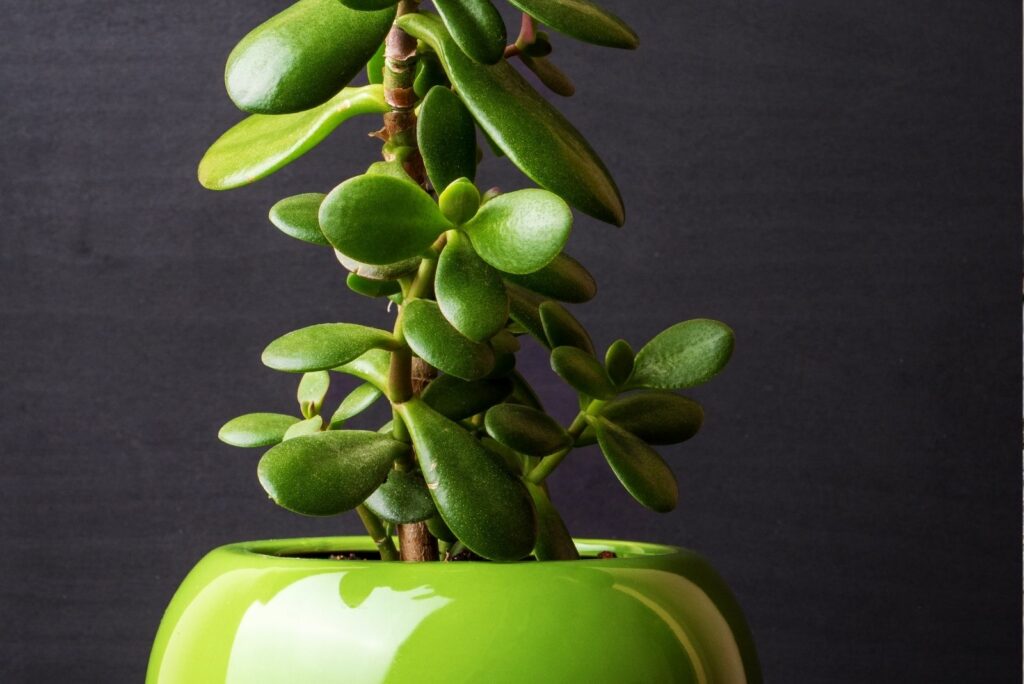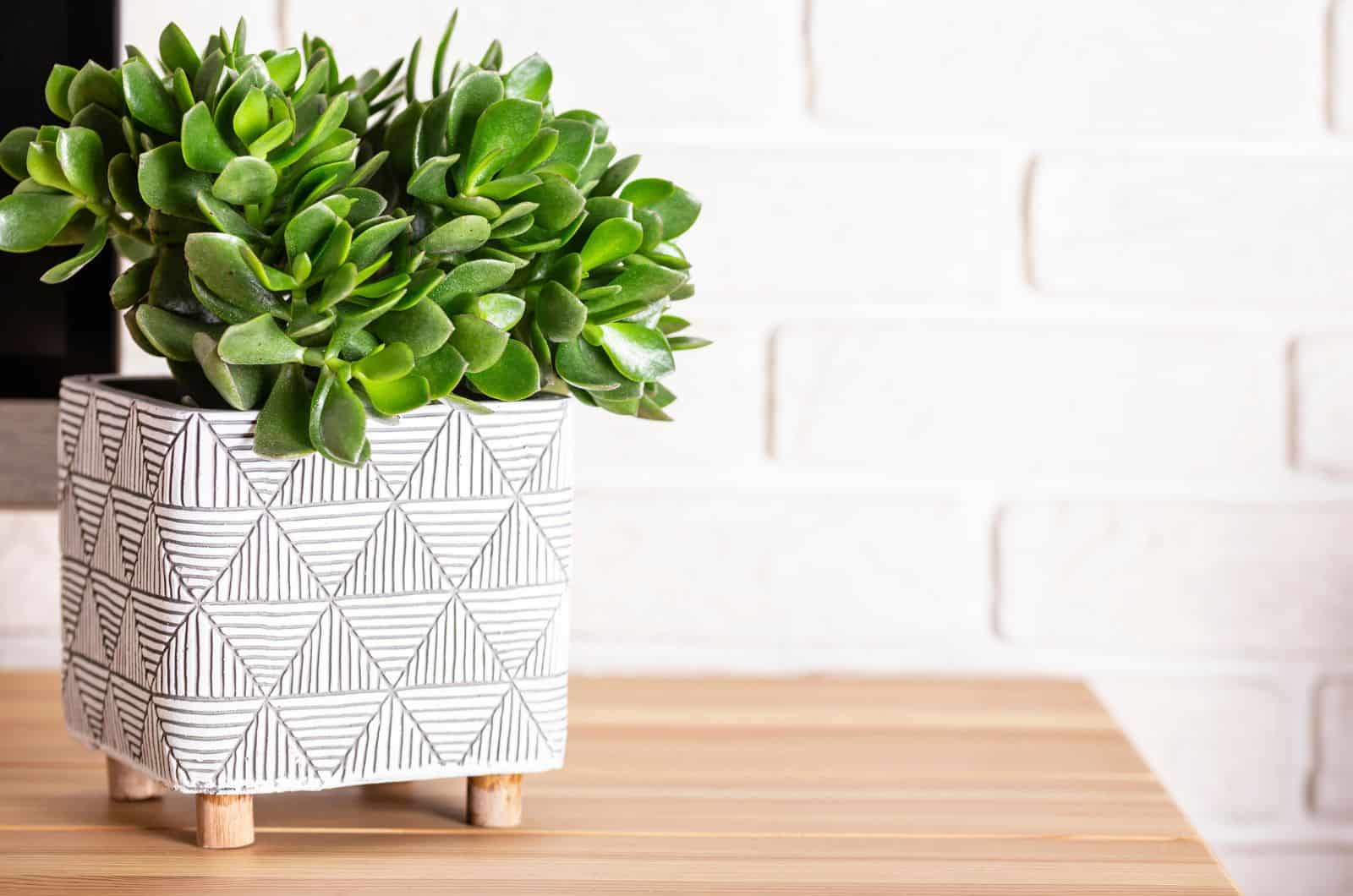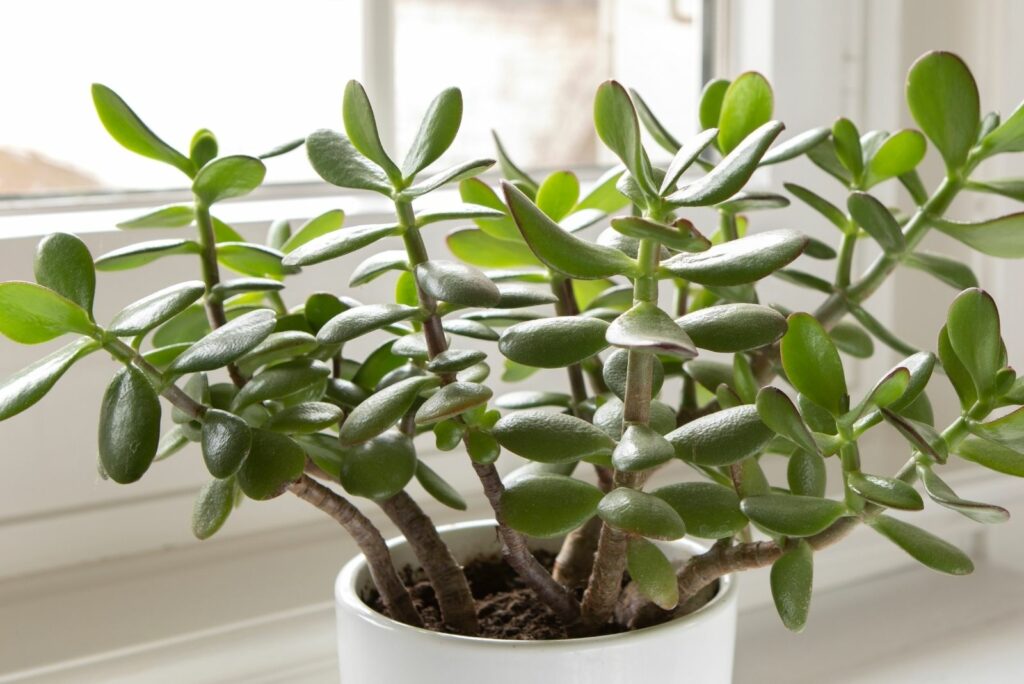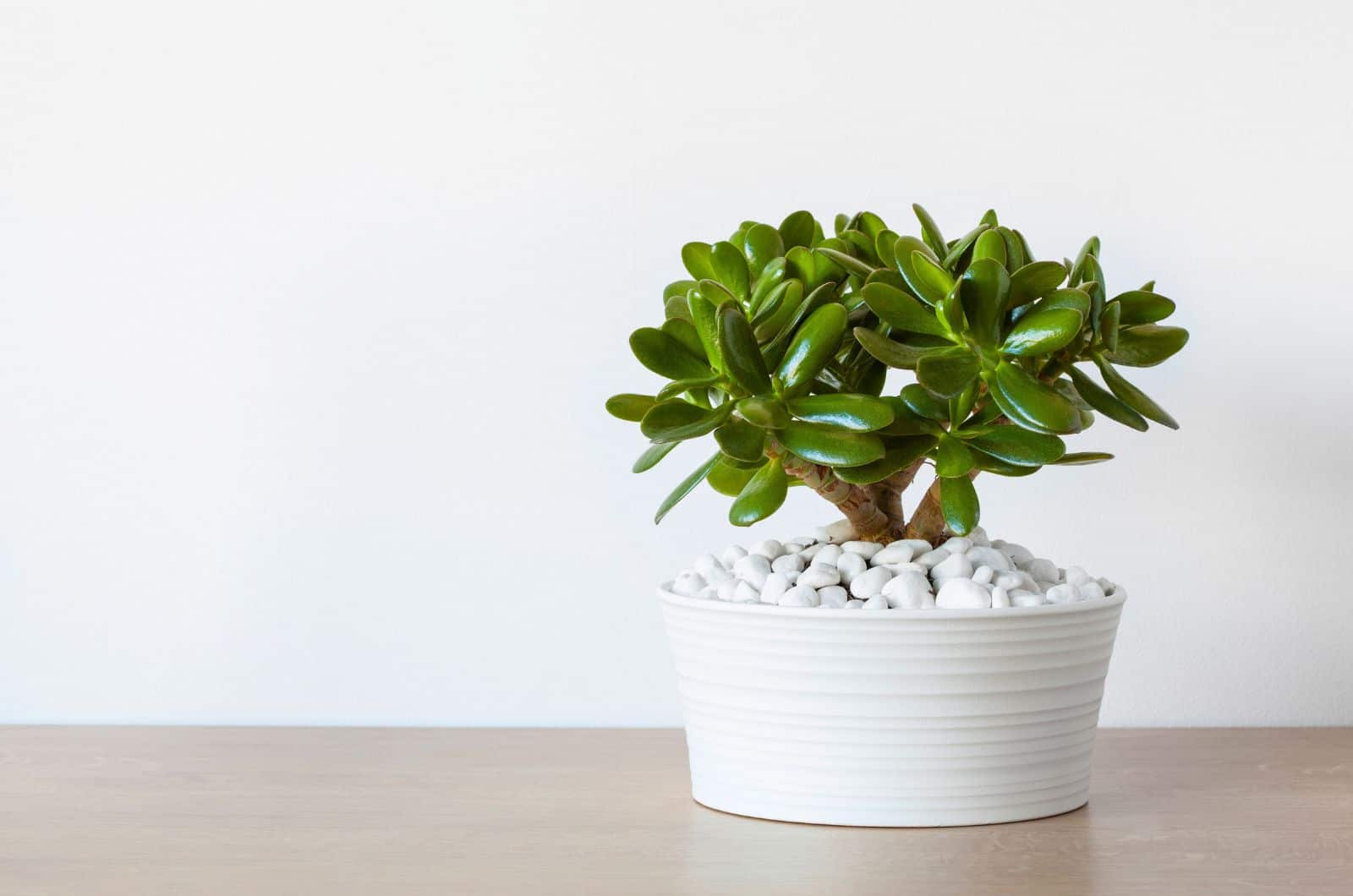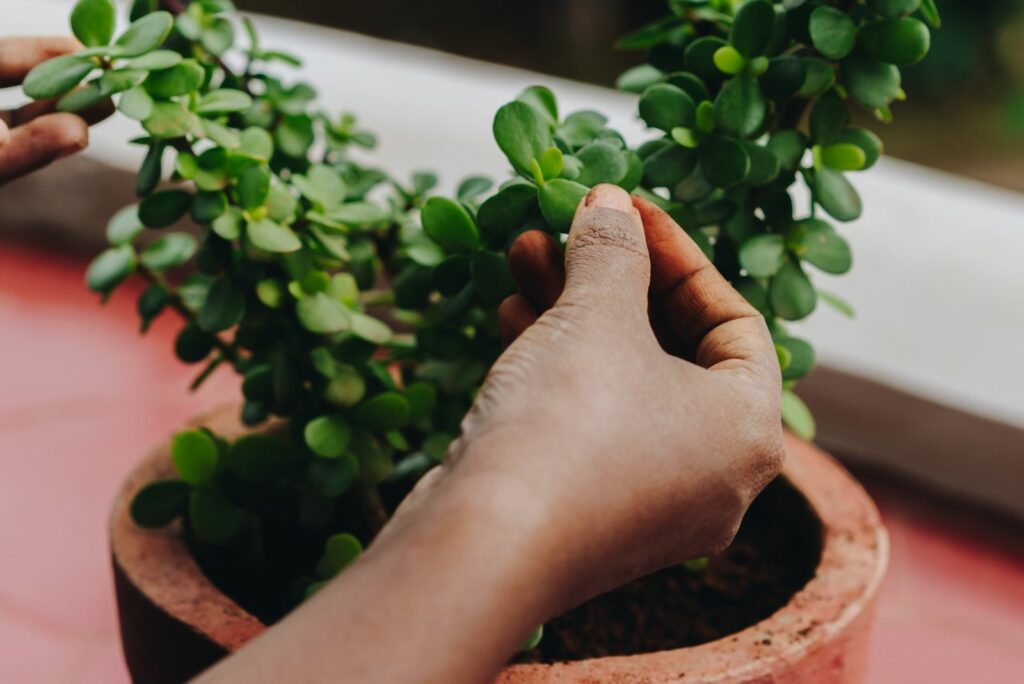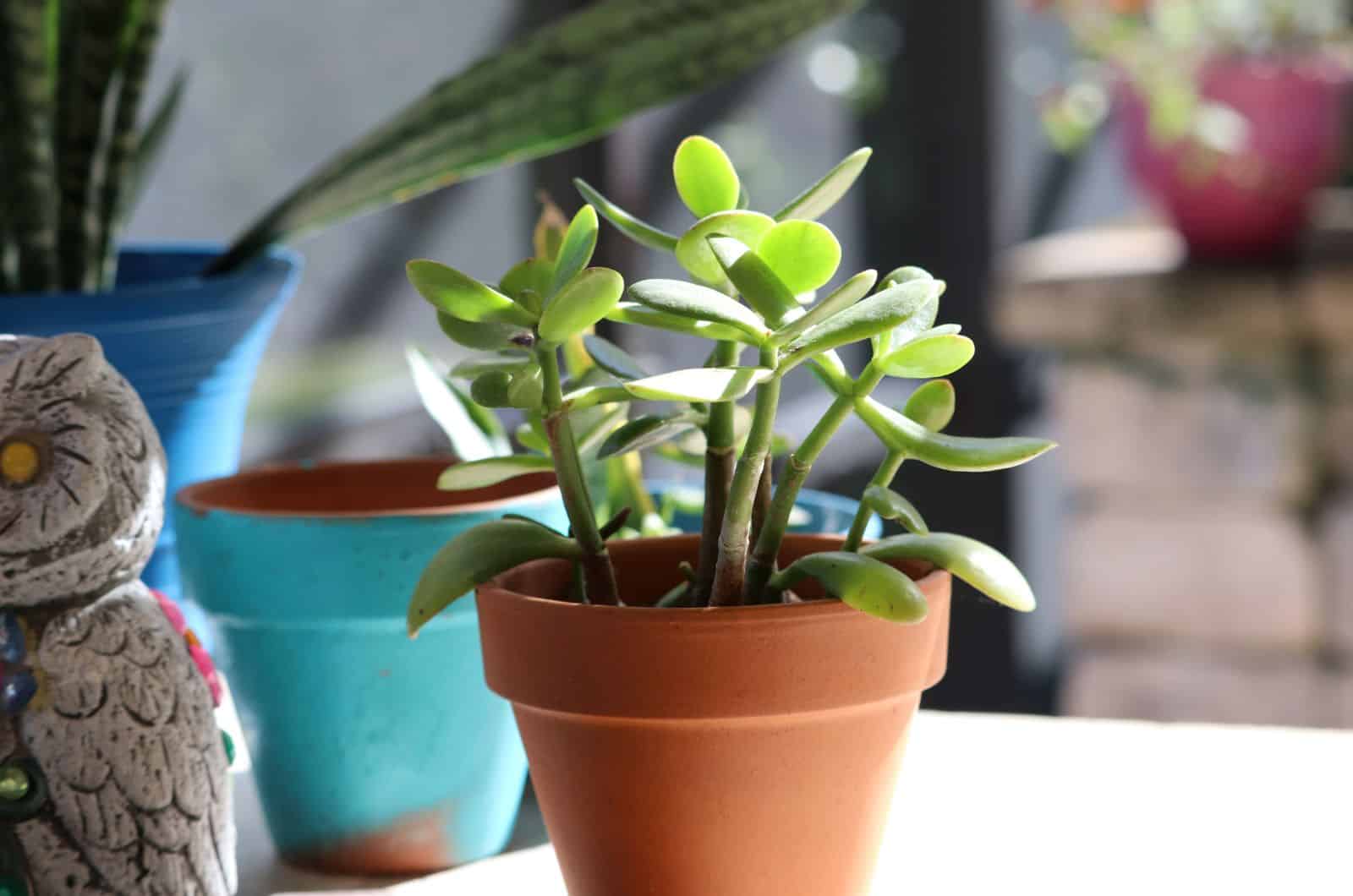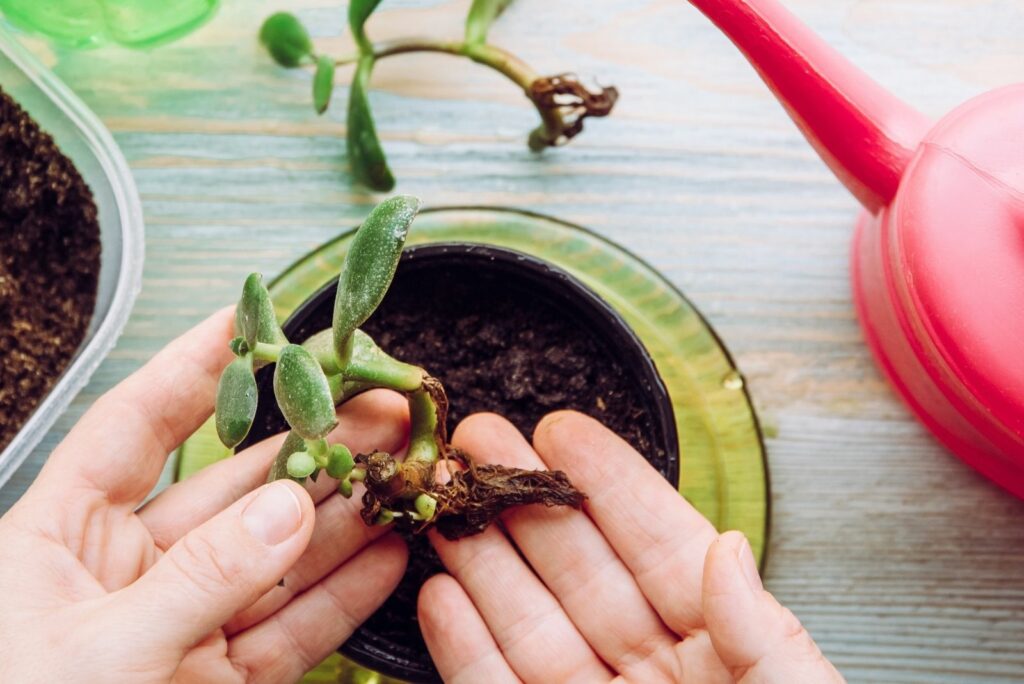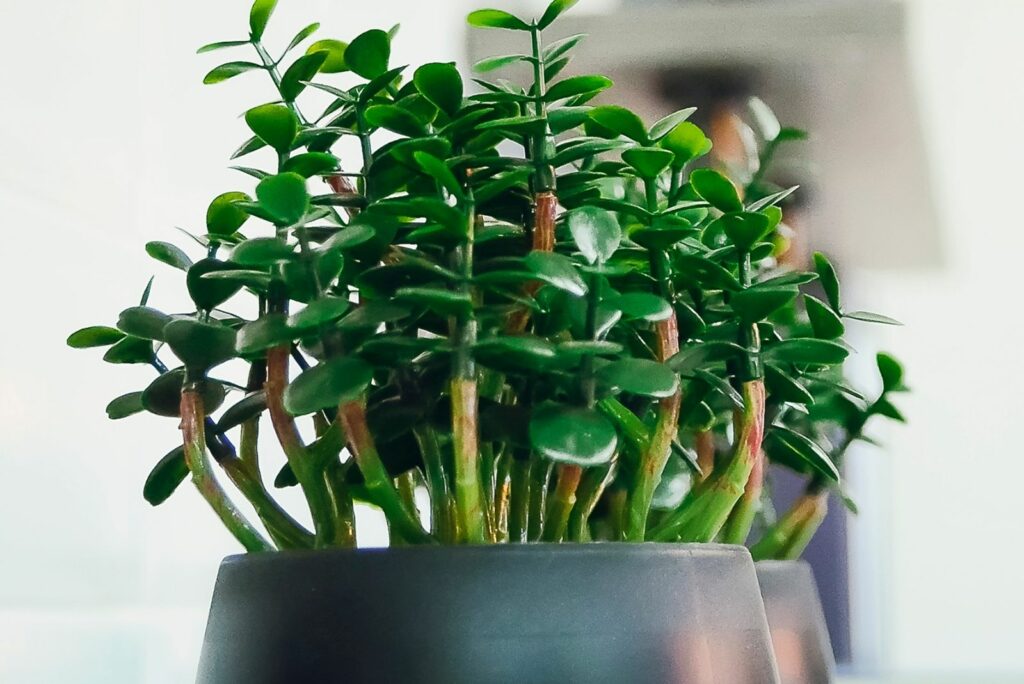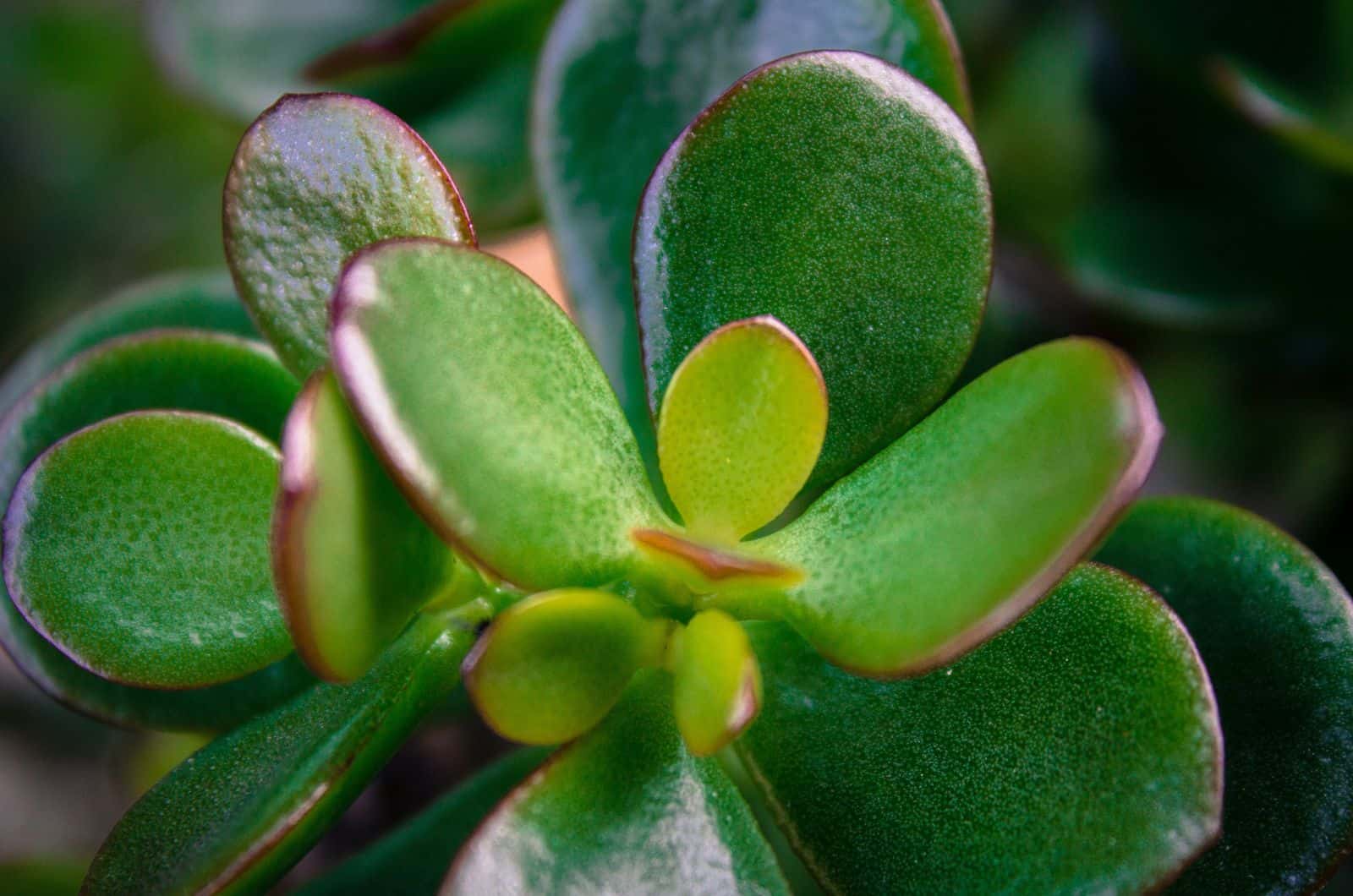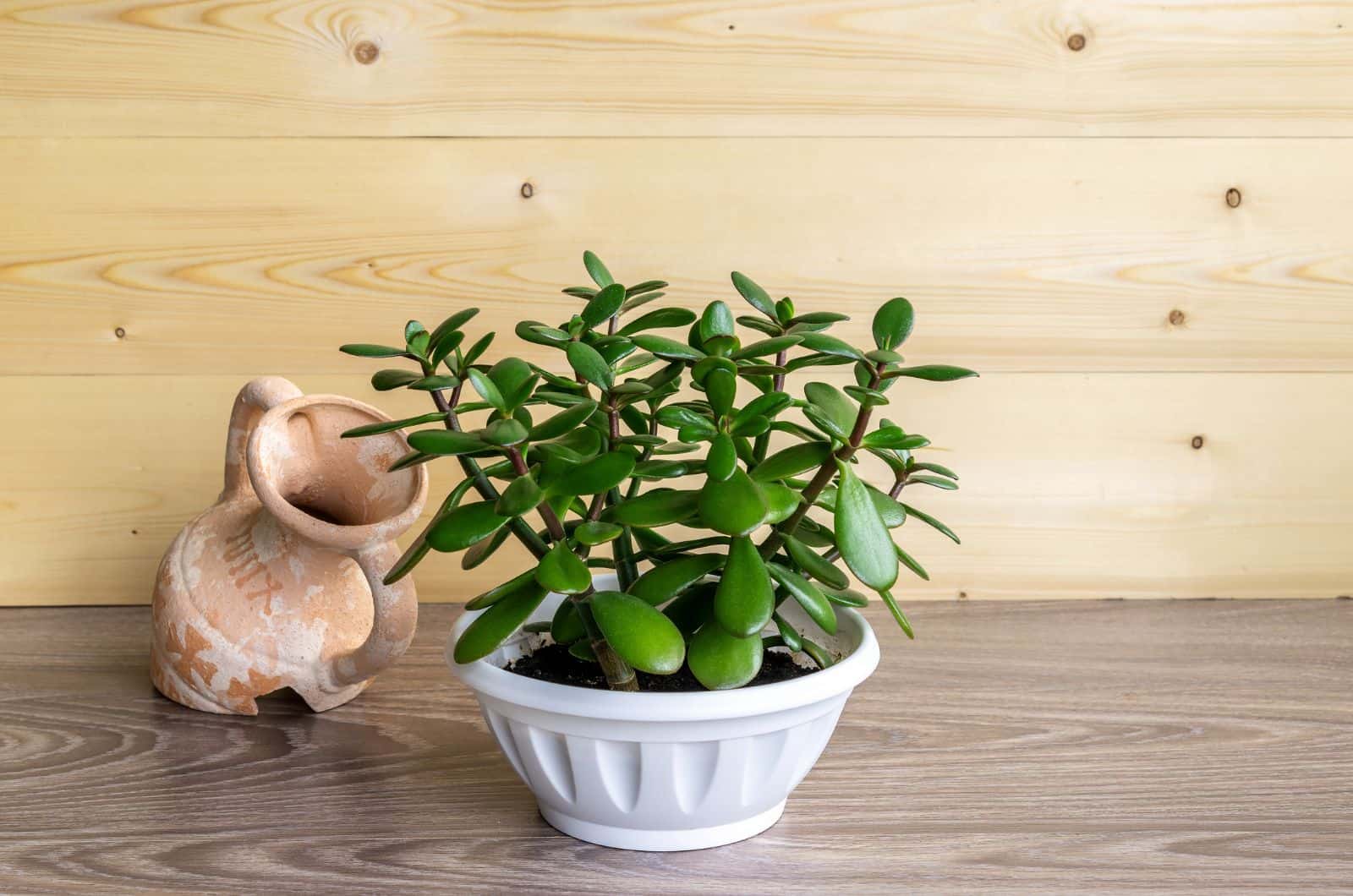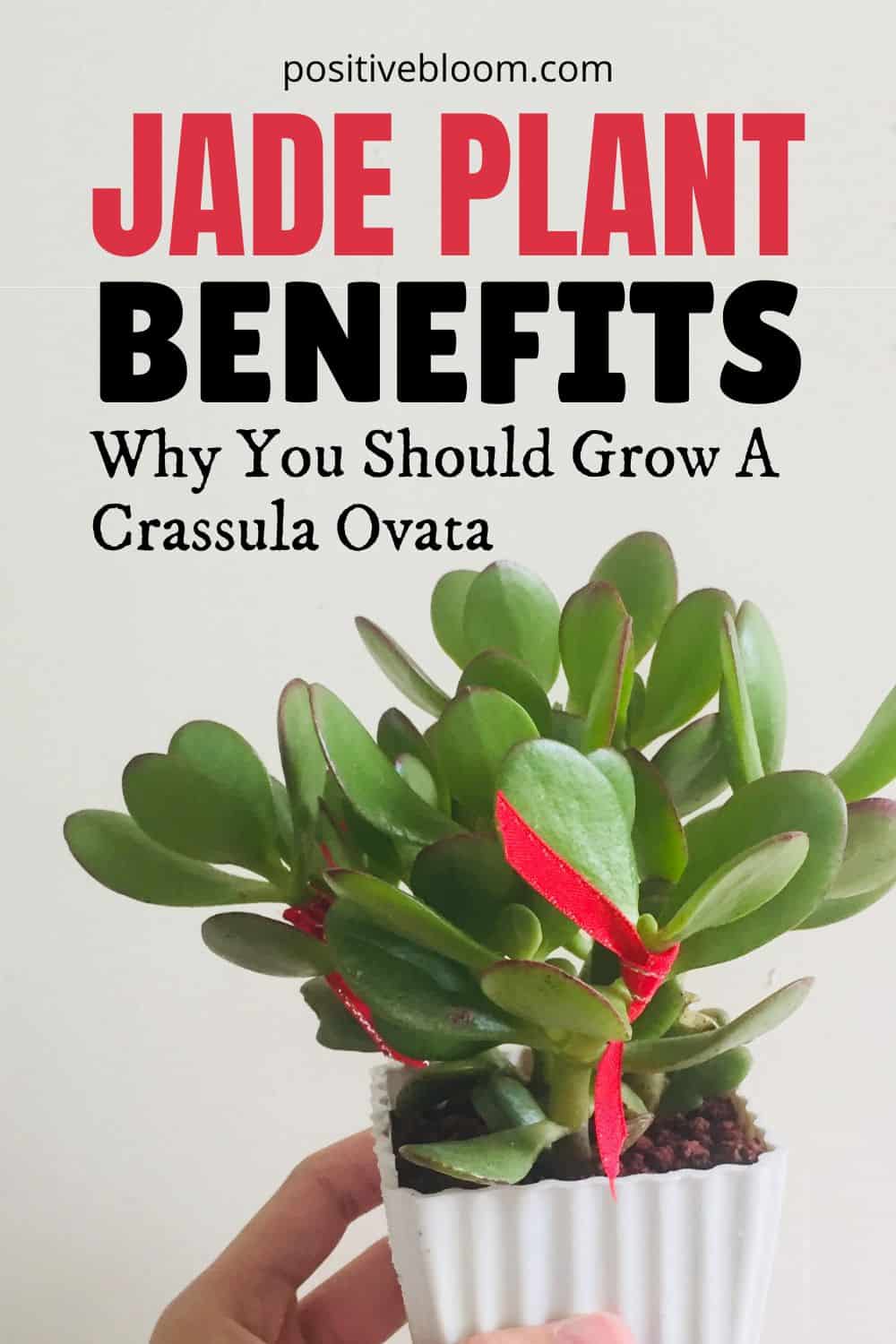Beautiful jade plants adorn many houses around the world, and are part of the most prestigious plant collections.
It belongs to the Crassulaceae family, just like Sedums and Echeverias.
The scientific name of the jade plant is Crassula ovata, and this stunning indoor plant is native to South Africa.
Its unique, fleshy, thick leaves grow on woody stalks, which is why this plant looks like a small tree.
There are many great reasons to grow this plant. In this article, I’ll tell you more about all the jade plant benefits and why you should grow one for yourself.
Before I move on, here’s some basic info about the jade plant:
[table id=468 /]
Let’s get started!
The Jade Plant Benefits
We mainly grow plants to decorate our rooms, but some plants are way more than just pretty.
Why is the jade plant beneficial? It improves air quality, increases indoor humidity, is easy to take care of, brings good luck, has medicinal properties, creates good Feng Shui, reduces stress leaves, is easy to propagate, and looks amazing.
What else is there to look for? This plant has it all!
Let’s get into details!
Improves Indoor Air Quality
NASA’s Clean Air Study was conducted in 1989, and since then, researchers have been looking for methods to clean the air we breathe. Indoor air isn’t less dangerous than outdoor air in terms of the presence of chemicals.
The air in our houses may contain airborne, invisible compounds, such as Volatile Organic Compounds (VOCs).
These risks are brought on by common household items, such as preservatives, moth repellents, and furniture. Our chance of developing illnesses like respiratory problems or cancer may increase as a result of VOC exposure.
However, much like carbon dioxide, plants can absorb these substances. According to recent studies, all types of jade plants are among the best houseplants for eliminating VOCs.
These plants perform very effectively at removing harmful chemicals, such as acetone and toluene. Too much exposure to toluene can result in major issues such as liver and kidney problems, fatigue, disorientation, and insomnia.
Other air-purifying plants include snake plants (mother-in-law’s tongue), pothos, dracaena, aloe vera, and spider plants.
Increases Indoor Humidity
If the indoor relative humidity is too low, it may have a significant impact on your health. Dry skin, itchy throat, and different allergies can all be the consequences of low humidity.
Furthermore, harmful bacteria and viruses can live in dry air for a very long time. Problems with low humidity occur in the winter because of cold air and heating sources.
You can fix the issue with low relative humidity by using a humidifier. However, plants such as pothos, jade plants, or peace lilies can also help you solve this issue.
Jade plants use Crassulacean Acid Metabolism, a photosynthetic adaptation that enables these plants to generate Evapotranspiration in the dark (uptake carbon dioxide during the night and perform photosynthesis during the day).
It’s A Low Maintenance Plant
No matter whether you grow your jade plant indoors or outdoors, it is really easy to maintain. Jade plants require lots of sunlight, but keeping them exposed to direct sun for too long may scorch their beautiful oblong leaves.
On the other hand, a lack of light can result in weak, lanky growth that makes the plant fall over. Jade plants need at least 6 hours of bright indirect light to thrive.
Choose a well-draining soil mix, such as ready succulent mix. This way, you’ll avoid overwatering your jade plant, which could lead to root rot.
Jade plants start their growing season in early spring, and need more water during this period. Soggy soil promotes fungal growth, so never leave your jade plant sitting in the water.
The ideal temperature range for Crassula ovata plants is between 65 and 75 degrees Fahrenheit. Feed your jade plant monthly with a light liquid fertilizer; fully established plants do well if fed with a balanced 20 20 20 fertilizer (diluted to one-quarter strength), or you can go with a homemade fertilizer for jade plants.
Pruning isn’t often necessary, except when the leaves are damaged, diseased, or discolored.
Keep an eye out for scale pests on jade plants because they may cause death!
Good Feng Shui
The jade plant is a type of money plant, and in Asian countries it’s believed that these plants bring good fortune.
Simply placing the jade plant in the appropriate location and maintaining its health and vitality can activate its positive fortune energy.
The significance of Crassula ovata in feng shui is based on the symbolism of growth and rejuvenation, which is reflected in the rich green leaves.
According to Feng Shui, the southeastern parts of your house are the best places for jade plants.
Placing your jade plant on the dining table is a great way to activate its benefits. It would be even better if you could place it so that it reflects in the mirror.
You can also place this lucky plant in the entryway to draw good chi.
Similarly to feng shui, the arrangement and position of the jade plant influences good Vastu.
As per Vastu, jade plants bring good luck into houses when placed in the southeastern parts.
Medicinal Properties
This plant isn’t a key component of medicine, including standard, alternative, and herbal medicine. However, it is suggested for skin warts in traditional Chinese remedies.
This method involves slicing an open jade leaf and covering the wart with the moist flesh for a number of days. The wart should come out after continuous exposure. It is believed that this plant also helps with nausea.
In Africa, jade plants are used for treating corns and intestinal issues. In China, some types of jade plants are used to alleviate diabetic symptoms.
If you decide to use the jade plant for medicinal purposes, you need to know that there isn’t much scientific research about the effects of jade plants.
Although some people advise using it on diabetic cats, please be very careful; according to the ASPCA, jade plants are toxic to pets.
Reduces Stress Levels
Many of us suffer with our mental health, and one of the main factors contributing to poor mental health is stress. Fortunately, jade plants might lower our stress levels.
According to research on the benefits of greenery indoors and outdoors for mental health during the pandemic, plants can provide a sense of escape if you spend hours alone in an office or other cramped area.
Participants in the study showed considerably fewer signs of depression and anxiety when they had houseplants compared to those who did not.
There are also a lot of studies that show people are happier when repotting than those who spend time on cell phones.
Easy To Propagate
If you want more jade plants in your house, you can quickly get them by propagating the plant via stem cuttings.
Propagation is indeed one of the greatest benefits of jade plants. First, you need to take a cutting from a healthy Crassula ovata plant. Allow a callus to develop over the cut region by placing the leaf in a warm location indoors for a week or so. Doing this will promote root development and prevent it from rotting.
Insert the calloused jade plant leaf’s tip into a little container filled with an adequate soil mix. Place the container with the lucky plant cutting in a warm spot. New roots will form in one to two weeks, at which point you should start watering your plant.
When the roots have developed firmly (test it by gently pulling on the cutting), it’s time to transplant the jade plant cutting to a new pot.
Looks Breathtaking
Even though the Crassula ovata is a succulent plant, it can develop into a lovely little tree. This makes it an excellent indoor plant for well-lit rooms and windowsills.
These plants produce unique, deep green leaves; if you meet their requirements, they’ll reward you with breathtaking pink or white flowers. These plants typically bloom in late winter or early spring.
Interestingly, the jade plant is a tall succulent type, but you can also prune it to get a bonsai. If you are a beginner grower, don’t worry, these plants are pretty hardy and you can easily prune them to get the desired shape.
These plants add a touch of beauty to any room and make perfect gifts for plant lovers. I recommend pairing it with other Crassula plants, such as the Silver jade plant. Jade plants are slow-growing succulents, and you can expect them to grow for about two inches per year.
Yes, this is pretty slow, but I assure you, it’s worth it!
Best Types Of Jade Plant
I am sure you now want to add at least one jade plant to your plant collection. So, what are the best jade plant varieties to grow indoors or outdoors?
Here are my top 5:
1. Crassula ovata’ Botany Bay’: This is a new variety of jade plants that features bright green leaves with red tips.
2. Crassula ovata ‘Hobbit’: This ovata produces tubular green leaves with red tips, and may reach 3 feet if all requirements are met.
3. Crassula ovata ‘Gollum’: Also known as the Ogre ear plant, the C. ovata ‘Gollum’ features tubular leaves, but the tips of the leaves resemble suction cups, making this succulent truly unique.
4. Crassula ovata ‘Pink Beauty’: This variety produces clusters of pink flowers that resemble stars.
5. Crassula ovata ‘Minima’: This succulent features densely packed leaves that grow on tiny branches, making the plant look bushy.
No matter which type you choose, I’m sure you’ll enjoy it!
Wrapping Up
I’m sure you were pretty surprised to discover that there’s so many jade plant benefits! Yes, this plant really has it all.
It will look amazing and decorate any room. It will purify the air and increase the humidity levels. If you place it in the southeastern parts of your home, it’ll bring you good luck and attract good fortune.
You can quickly propagate it and get even more stunning jade plants. It will also help you reduce stress and may even heal you (but keep it out of reach of your pets).
What else could we want from just one plant?
Until next time!
Like this post? Share or pin it for later!

